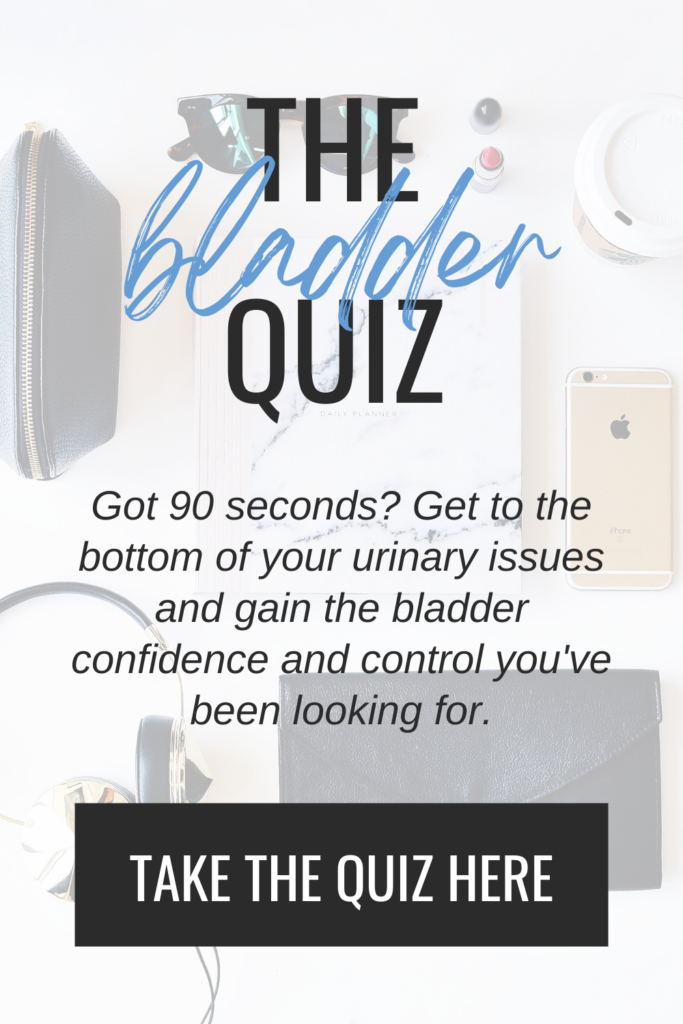Menstrual cup users unite (!!!), and if you haven’t joined the club quite yet but are curious to see what it’s all about, you’re in the right place. This feminine hygiene product has so many positives, butttttttt can be intimidating if pads or tampons have been your go-to for decades. Cue the menstrual cup guide I wish I had years ago (*points stage right*) – filled with a pelvic floor physical therapist’s favorite tips from personal experience, a little experimentation, and of course clinical expertise…my favorite mix.
First…what is a menstrual cup?
A menstrual cup is a reusable, flexible, bell-shaped period product that’s inserted into the vaginal canal during a woman’s menstrual cycle to catch and collect blood, then emptied throughout the day. Simple as that!
The (undeniable) benefits of the menstrual cup
If you’re already sold on the menstrual cup, simply scroll a little further for my ~best~ tips around inserting, using, removing, and cleaning them (aka – the most invaluable part of this menstrual cup guide, IMO). But if you’re not quite there yet and need a little more convincing, the following reasons are why the menstrual cup was and continues to be a no-brainer choice for me.
Budget friendly. The average menstrual cup costs anywhere from $10 – $30 and can be used for up to ten…yes, TEN years with proper care! Compare that to a box of pads or tampons that cost around the same price but needs to be purchased again and again, month after month. To total it all up, the average woman spends $200-$300 per year on disposable feminine products equaling thousands of dollars over a lifetime. That expense is exponentially reduced and virtually eliminated by switching to a menstrual cup.
Environmentally conscious. In North America alone, around 20 billion pads, tampons, and their packaging are dumped in landfills every year. These products take hundreds of years to break down, and plastic tampon applicators never truly biodegrade. In contrast, one menstrual cup gets thrown away once every few years creating a ~much~ smaller carbon footprint.
Chemical-free. It doesn’t matter if your pads are made from all-natural bamboo or 100% organic cotton, if they’re disposable, then the inside core material contains chemicals to help with absorbency and can negatively affect vulvar and vaginal health. Conversely, most menstrual cups are made from toxin-free materials like silicone, rubber, latex, or thermoplastic elastomers (TPE); plus, because cups collect blood rather than absorb it, there’s no harmful chemicals needed.
RELATED POST: The 411 on Pubic Hair & Your Ultimate Guide to Care For “Down There”
Holds more liquid. Maybe you’re thinking, “ok, ok…all that’s lovely, but how well do they aaaaaactually work?”. A menstrual cup can hold about one ounce of liquid, which is two to three times the amount of a pad or tampon, and also means it only needs to be emptied every twelve(ish) hours. When you have the right cup for your body, insert it properly, and empty it regularly (more guidance on all of [that] below), a menstrual cup becomes an easy “yes!”.
Tips for safely and effectively removing & inserting a menstrual cup
As if women need one more thing to worry about, using a menstrual cup safely and effectively isn’t necessarily the simplest or most intuitive thing. Thankfully, it only gets easier after reading a menstrual cup guide like this (*wink wink*) and with every use. Girl scout’s honor…it’s 1000000% worth the steep learning curve.
Do it alllllll in sitting (the most relaxed position). Some menstrual cup guides encourage women to remove their menstrual cup in whatever position feels right – sitting, standing, squatting, and even with one leg up on the toilet. But for an easier experience and less pain, the pelvic floor should be as relaxed and possible, and this takes place in the sitting position. Not hovering. Not squatting. Not standing. Do it allll in sitting each and every time for the most success.
Go to the bathroom first. Whether you’re inserting or removing your menstrual cup, going to the bathroom PRIOR to moving it will help relax the pelvic floor and make everything flow smoother. Attempting to hold in pee or move the menstrual cup around a full rectum creates far more problems than necessary.
More on pelvic floor relaxation. As you can see, the ability to relax the pelvic floor muscles is EV-ERY-THING for stress-free menstrual cup use. Try this technique prior to inserting and removing your cup –
1. Wash your hands.
2. Sit on the toilet and go to the bathroom.
3. After completely voiding and wiping, do what I call the “mini kegel – let it go”:
- Find your pelvic floor muscles by performing a small, submaximal kegel (or pelvic floor contraction) to tell the brain which muscles to relax.
- Let the pelvic floor muscle contraction go – drop, release, open the kegel and allow your muscles fall downward. NOTE: This is not pushing (!!!)…it’s simply relaxing.
- Feel the slight lowering/loosening/opening/warming/releasing/softening of the pelvic floor muscles.
4. Once the pelvic floor is relaxed, thennnnnnnn insert or remove the menstrual cup.
Rinse with warm water. Just like no one likes chilly lubricant during vaginal exams (IYKYK), a cold cup warrants those same feels (and more of that unwanted pelvic floor tension). When rinsing the menstrual cup between uses, use warm water whenever possible for a more pliable cup and comfortable experience.
Know your anatomy. I think of the vaginal canal like an upside-down wine bottle – the vaginal entrance creates a small cylinder like the neck of a wine bottle, then the pelvis bone makes a lip that’s like swooping into the body of the bottle. *This* is where the top rim of the cup should sit for best stability, most comfort, and least leaks.
Create suction with insertion. To prevent leaking and unnecessary movement, create a light suction with the menstrual cup inside the vaginal canal. For the average bell-shaped cup, this looks like folding the cup in half length-wise, then in half again. Insert it into the vagina until the rim of the cup passes the lip of the pelvis described above. Allow the cup to unfold, then give the cup and gentle squeeze to create suction. Make sure the cup is fully open (not sucked in) for best results.
Release suction before removing. Many blame menstrual cups for pelvic organ prolapse, but this is only the case when one pulls on the cup aggressively and repetitively to remove it before releasing suction. Perform the pelvic floor relaxation technique, slightly squeeze the cup to release its suction, then pull down to remove it.
Your pelvic floor might be why menstrual cups are painful
A little PSA – using menstrual cups should not be painful. Period (get it!?…lol). And while we’re sharing mic-drop moments, let me also affirm that your menstrual cycles shouldn’t be unbearable either. Oftentimes this pain is caused by general pelvic floor tension that needs to be addressed beyond releasing the pelvic floor muscles prior to menstrual cup removal and insertion. This FREE 4-step guide has everything you need to start relaxing the pelvic floor, and ultimately use menstrual cups without issues.
RELATED POST: 18 Reasons Your Have a Tight Pelvic Floor (Plus…What to Do About It)
RELATED POST: My Daily Pelvic Floor Relaxation Routine & Why You Might Want to Try It Too
RELATED POST: 7 Holistic Menstrual Cycle Hacks to Help You Thrive During Your Period
My favorite menstrual cup…period.
Compared to when I first started researching menstrual cups, there are so many new brands and options on the market. I tried the Me Luna Cup years ago, and am still using (and loving) it to this day. Not only is it truly a great product, it also has some amazing customization options. There are two different firmness levels, two length options, three various handle styles, and four different sizes, all of which can be tailored for that “just right” feel & fit. Me Luna has a size chart, cup calculator, and my favorite…a cup fairy quiz that helps determine the best cup for you. I personally got the perfect match on my first try!
How to clean & disinfect your menstrual cup
Most menstrual cups come with clear care instructions, butttttt some do not. Plus…as a pelvic floor physical therapist, I don’t quite agree with some of the recommendations, and want to share my research-backed opinion on the subject.
Cleaning. Each time the menstrual cup is removed and then re-inserted, it’s important to clean it as best as possible. If a sink is available, run it under warm water. If no sink is available, wiping it down with toilet paper will suffice. I do ~not~ believe soap or even a specific cup cleaning product are necessary or same. The vagina is a self-cleaning structure, and chemicals from said cleaning products can disrupt natural vulva and vaginal health and good bacteria. Simply make sure to wash your hands prior to handling your cup and you should be good to go.
Disinfecting. Each month after your menstrual cycle is over, it’s important to disinfect the cup, and boiling it is my favorite option. Place the menstrual cup in a pot filled with water on the stove and bring it to a boil for about five minutes. Allow it to air dry and then keep it a breathable pouch or until the next month.
Let’s answer the “TMI” questions!
By now I hope you know there’s no such thing as TMI in this space. So per usual, I’m taking the “too much” out of TMI and getting to the nitty gritty stuff women should be talking about – right here, right now.
CAN YOU FEEL THE CUP?
There are two reasons one might feel their menstrual cup – 1) it’s the wrong shape, style, or size, or 2) their pelvic floor is too tight. Thankfully…I’ve addressed both of those dilemmas right here in ^^ this ^^ menstrual cup guide. Because the average woman has pelvic floor tightness, learning to relax your pelvic floor is where I would start if this describes you. *Cough cough*…this 4-step guide is the perfect place to begin.
WILL USING THE CUP CAUSE AN ODOR OR SMELL?
Because a menstrual cup collects period blood inside the vagina, it should not smell. The only time blood smells is when it makes contact with air. If you notice a smell while the cup is inserted, the cup might need to be disinfected better between uses. Try boiling it for a longer period of time (15-ish minutes), boiling it with vinegar, and/or leaving it to dry in the sun to help remove any bacteria build-up.
CAN YOU HAVE SEX WITH THE CUP IN?
Because most cups take up the space of the entire vaginal canal, it’s nearly impossible to have penetrative vaginal sex with a menstrual cup in. To maintain an active sex life during your period, my favorite option is the softdisc, which is like a menstrual cup but more pliable and thrown away at the end of each menstrual cycle.
CAN I USE THE CUP IF I’VE NEVER HAD PENETRATIVE SEX?
Yes! You do not need to have had penetrative sex to use a menstrual cup. I find that those who have not had sex tend to be a little more hesitant towards this route, but it’s a 1000000% safe and physically possible option to try.
WILL A CUP CAUSE A PROLAPSE OR MAKE IT WORSE?
If you insert and remove a menstrual cup properly, it will not cause a prolapse or make it worse. The light suction that a cup places on the cervix is not strong enough to cause a prolapse, and as long as suction is released prior to removing it, there’s nothing to worry about.
CAN I USE A MENSTRUAL CUP WITH A PROLAPSE?
A prolapse is when the bladder, uterus, and/or rectum are protruding into the vaginal canal. While this may make finding the right cup and inserting it a little more challenging, it can be done (she confidently said…speaking from experience). FYI – most women with a prolapse do better with a shorter menstrual cup.
Aaaaand she takes a bow
As you can see, there’s wayyyyy more that goes into using a menstrual cup than other feminine hygiene products, but once you find the right one, get the hang of maneuvering it, and eventually fall in love…the rest is history! I firmly believe the pros outweigh the cons when it comes to menstrual cups and will personally continue to use one until something better makes its way on the market.
My ultimate hope is that this menstrual cup guide provided the *exact* answers you were looking for on the subject, an in case it didn’t…let ya gurl know! I’m more than happy to make edits and add info if it means you’re less overwhelmed and more confident in the menstrual cup department.
– Amanda
Disclaimer: The content provided here does not constitute medical advice, nor is it a substitute for personalized healthcare. I’m a doctor, but I’m not your doctor. If you have concerns about a medical condition, diagnosis, or treatment, you should consult with a licensed healthcare professional.
Disclosure: Some of the links above are affiliate links, meaning, at no additional cost to you, I will earn a commission if you click through and make a purchase. No pressure, but I have a feeling you’re gonna like what I’ve taken the time to put my recommendation behind.



















